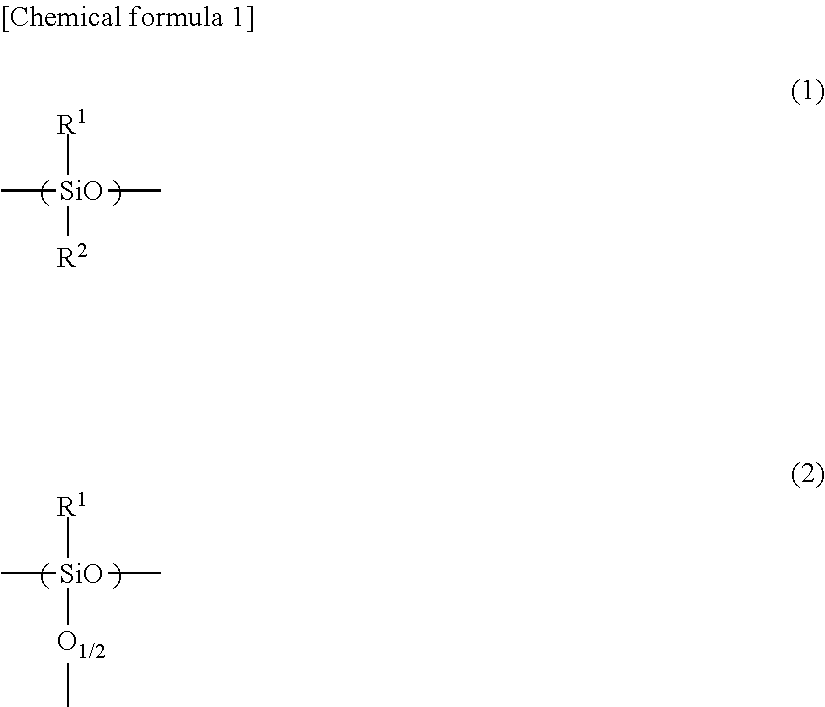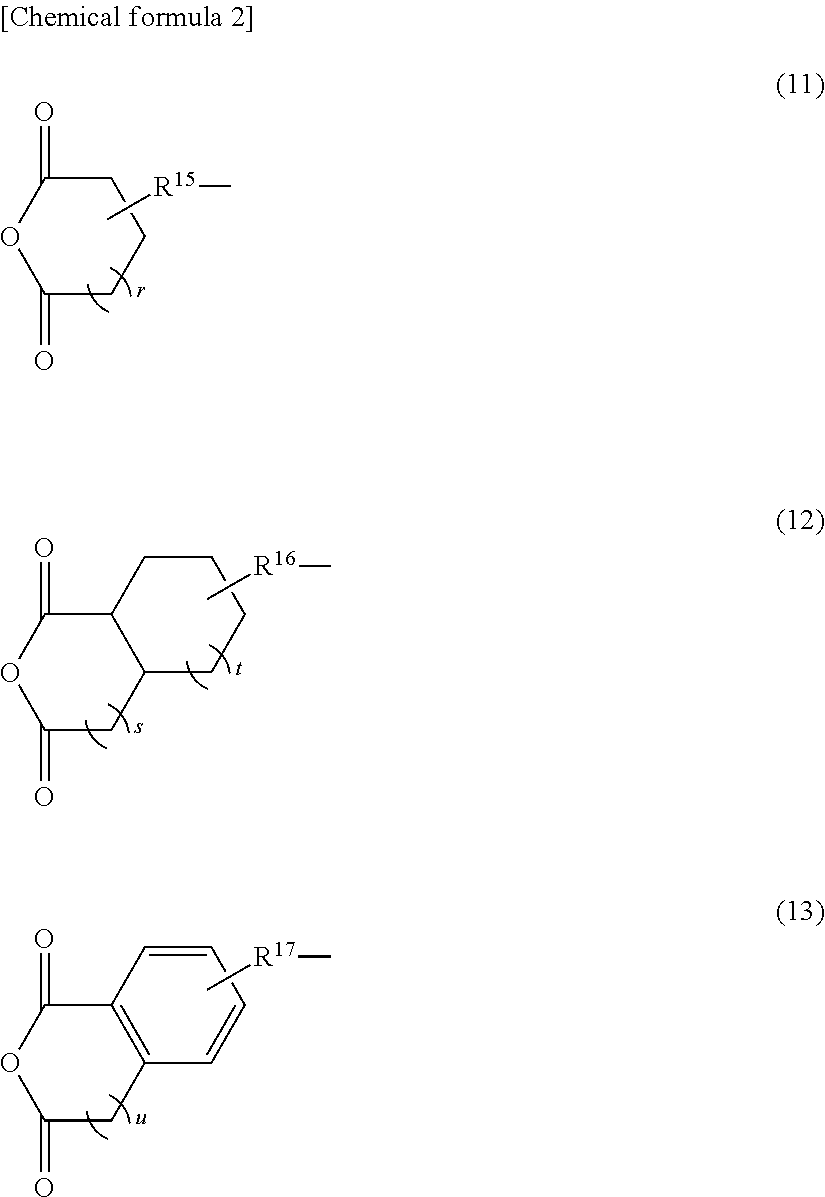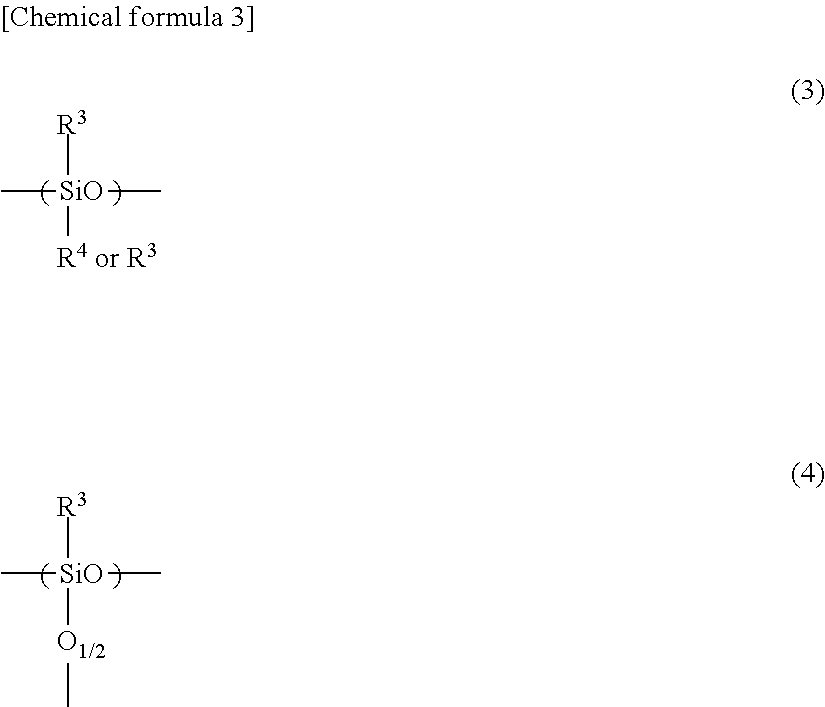Negative photosensitive resin composition, cured film obtained by curing same, method for producing cured film, optical device provided with cured film, and backside-illuminated CMOS image sensor
a technology of resin composition and negative photosensitive, which is applied in the direction of lighting and heating apparatus, radio frequency control devices, instruments, etc., can solve the problems of complex production process, inability to maintain wiring deterioration, so as to achieve high sensitivity in exposure and resolution, high sensitivity of refraction, and high transparency properties
- Summary
- Abstract
- Description
- Claims
- Application Information
AI Technical Summary
Benefits of technology
Problems solved by technology
Method used
Image
Examples
synthetic example 1
Synthesis of Carboxyl Group-Containing Silane Compound (A)
[0102]23.23 g of p-aminobenzoic acid and 209.05 g of PGMEA were charged in a 300 ml recovery flask, and the mixture was stirred at room temperature for 30 minutes to dissolve the p-aminobenzoic acid. To the resulting solution, 46.53 g of isocyanate propyltriethoxysilane and 1.19 g of dibutyltin dilaurate were added, and the mixture was stirred in an oil bath at 70° C. for 1 hour. The mixture was then allowed to cool to room temperature, and precipitated solid was collected by filtration through a glass filter and dried to obtain carboxyl group-containing silane compound (A). The yield was 46.7 g.
synthetic example 2
Synthesis of Carboxyl Group-Containing Silane Compound (B)
[0103]23.39 g of p-hydroxybenzoic acid and 210.5 g of PGMEA were charged in a 300 ml recovery flask, and the mixture was stirred at room temperature for 30 minutes to dissolve the p-hydroxybenzoic acid. To the resulting solution, 46.53 g of isocyanate propyltriethoxysilane and 1.19 g of dibutyltin dilaurate were added, and the mixture was stirred in an oil bath at 40° C. for 3 hour. The mixture was then allowed to cool to room temperature, and precipitated solid was collected by filtration through a glass filter and dried to obtain carboxyl group-containing silane compound (B). The yield was 42.4 g.
preparation example 1
[0104]Preparation of a Solution of Polysiloxane compound (b) having metallic compound particles (a) dispersed therein (The procedure includes the step of synthesizing the polysiloxane compound, and this also applies to the following Preparation Examples.)
[0105]To 500 ml 3-neck flask, 7.03 g (0.03 mole) of 3-acryloxypropyltrimethoxysilane, 15.37 g (0.04 mole) of carboxyl group-containing silane compound (A), 7.45 g (0.03 mole) of 1-naphthyltrimethoxysilane, 156 g of “OptLake” (registered trademark) TR-527 (product name, manufactured by JGC Catalysts and Chemicals Ltd.) having a number average particle diameter of 15 nm (dispersion of titanium oxide-silicon oxide composite particles in methanol (20.6% by weight)) (particle content of 150 parts by weight in relation to 100 parts by weight (22.3 g) of the organosilane after complete condensation), and 83.84 g of DAA were charged, and to this mixture, an aqueous solution of phosphoric acid prepared by dissolving 0.217 g of phosphoric aci...
PUM
| Property | Measurement | Unit |
|---|---|---|
| number average particle diameter | aaaaa | aaaaa |
| refractive index | aaaaa | aaaaa |
| temperature | aaaaa | aaaaa |
Abstract
Description
Claims
Application Information
 Login to View More
Login to View More - R&D
- Intellectual Property
- Life Sciences
- Materials
- Tech Scout
- Unparalleled Data Quality
- Higher Quality Content
- 60% Fewer Hallucinations
Browse by: Latest US Patents, China's latest patents, Technical Efficacy Thesaurus, Application Domain, Technology Topic, Popular Technical Reports.
© 2025 PatSnap. All rights reserved.Legal|Privacy policy|Modern Slavery Act Transparency Statement|Sitemap|About US| Contact US: help@patsnap.com



